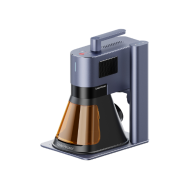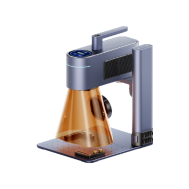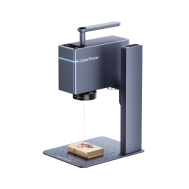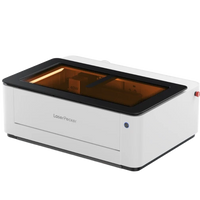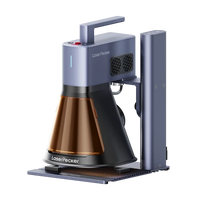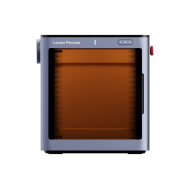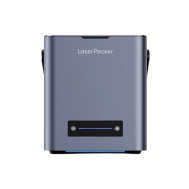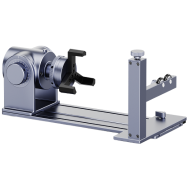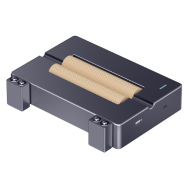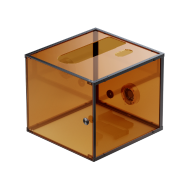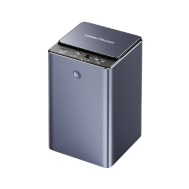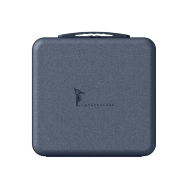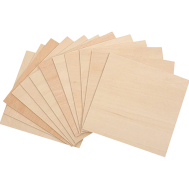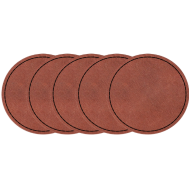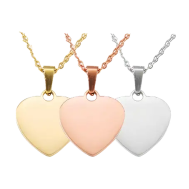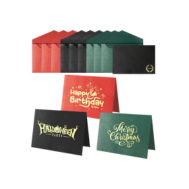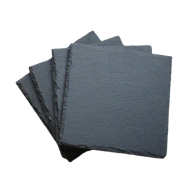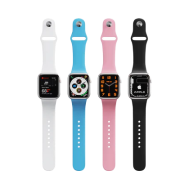Leather has always represented quality and personality. Think about it: wallets, belts, handbags, notebooks, and keychains all gain value when they're customized. Making leather your own transforms regular items into special pieces that reflect you. Whether it's a heartfelt present, brand creation, or a personal style statement, personalizing leather ensures each item is unique and made to last.
This guide goes over how to personalize leather. We'll look at the pros and cons of each, explaining why laser engraving is the most accurate, adaptable, and professional choice.

In this article:
- Part 1: Five Ways to Personalize Leather
- Method 1: Laser Engraving
- Method 2: Heat Embossing / Hot Stamping
- Method 3: Hand Tooling
- Method 4: Leather Dyeing & Painting
- Method 5: Stitch Customization
- Part 2: Why Laser Engraving is the Best Way to Personalize Leather
- Part 3: How to personalize leather with LP4
- Part 4: Tips for Personalizing Leather
- Part 5: FAQs for Personalizing Leather
Part 1: Five Ways to Personalize Leather
Many ways exist to mark leather. Choices range from hand tools to lasers, each having different levels of artistry, accuracy, and how well they work. Which one is best depends on the design, the kind of leather, and the final appearance desired. Let's look at some common methods.
Method 1: Laser Engraving
Laser engraving uses a strong beam emitted by laser engraver to vaporize a thin layer of leather. This creates clean, permanent marks without touching the material. You can reproduce logos, text, illustrations, and complex designs with great accuracy.
This works well on real and fake leather, creating good contrast and texture. Current systems, such as the LaserPecker LP4, use both infrared and blue diode lasers. This lets you engrave all kinds of materials, from natural leather to PU surfaces, with no trouble.
It's quick and consistent and great for making one-off items or larger batches, making it a favorite for crafters, brands, and DIYers who want professional-looking results.
To personalize leather, you can also combine laser engraving and laser cutting techniques to create custom leather patches for hats and more.
Method 2: Heat Embossing / Hot Stamping
Hot stamping injects art into leather through heated metal stamps that press designs or words, leaving a groovy, tactile imprint, which appears awesome on vegetable-tanned leather.
Keep in mind, it calls for metal dies and a press, so it's not the speediest choice and doesn't fit if you just want a couple of items done or desire something special. Once you make the die, it's permanent, so this method fits items like logos or monograms that you often use.
Method 3: Hand Tooling
Working leather by hand is a time-honored tradition. You're literally shaping the material with carving, beveling, and stamping, all done with special tools and your own two hands. The outcome is often stunning – intricate, artistic, and full of character.
Just a heads-up: it calls for practice and patience. Given is handmade, so expect each piece to have its own unique charm. Hand tooling is excellent when you want to show off craftsmanship, but it's not a quick method.
Method 4: Leather Dyeing & Painting
Want to give your leather stuff some zing? Toss in some color! Think about painting cool designs, your initials, or even whole areas with paints and dyes made just for leather. It's a killer way to get artsy and really make your leather gear your own.
Heads up, though-painted stuff might fade or chip over time, mostly on things you bend a lot. But if you're looking to flash your style and make something no one else has, dyeing and painting are worth more than just burning a design.
Method 5: Stitch Customization
In the end, stitching can really change how leather items look with different thread colors, patterns, or even some cool embroidery. Think about a wallet with contrasting stitches or a patch with initials sewn on it – it's all about adding that little something extra.
This works best when paired with other methods like laser engraving or embossing, mixing both texture and color to make it personal.
| Method | Look & Style | Precision & Consistency | Durability | Efficiency | Ideal For |
|---|---|---|---|---|---|
| Laser Engraving | Clean, high-contrast, modern | ★★★★★ | Permanent, fade-resistant | Fast | Gifts, branding, mass production |
| Hot Stamping | Deep, embossed effect | ★★★★☆ | Very durable | Medium | Logos, initials |
| Hand Tooling | Artistic, handmade look | ★★★☆☆ | Durable with care | Slow | Custom art pieces |
| Dyeing & Painting | Colorful, artistic | ★★☆☆☆ | May fade or chip | Medium | Artistic customization |
| Stitch Customization | Subtle texture and color | ★★★☆☆ | Strong if protected | Slow | Accents, repairs, decorative work |
In short, laser engraving is a great choice. It's accurate, quick, and lasts. It's also cleaner than painting, more versatile than hot stamping, and faster than doing things by hand. This makes it ideal for art and business branding.
Part 2: Why Laser Engraving is the Best Way to Personalize Leather

Laser engraving is a cool blend of tech and art.. You can copy any design, logo, or pic onto leather in no time without any harm.
Forget about metal molds like with embossing. Just upload what you want and go. The designs last, feel good to the touch, and don't wear off easily. Feel free to play with the power and speed.
Laser engraving is also good for the planet. It skips the chemicals and inks, which means less pollution. If sustainability matters to you, it's a smart move.
With gadgets like the LaserPecker LP4, you can get pro-level engraving right at home. It's great for adding personal touches to your house, studio, or small shop.
Part 3: How to personalize leather with LP4
The LP4 is a dual-laser engraver that makes customizing leather easy and exact. It has a 450nm blue diode laser for materials you can see and an infrared (IR) laser for surfaces that are delicate, like coated ones, great for any leather item.
Here's how to begin:
- Ready your design - Make or bring in your logo, name, or design in LightBurn or LaserPecker Design Space.
- Clean the leather - Wipe it with alcohol to get rid of oils or dust so the burn is cleaner.
- Place your item - Use the LP4's preview outline to be sure it's in the right spot.
- hange settings - Begin with low power (15-25%) and a speed that's not too fast or slow. If you can, test it on a spare piece.
- Engrave and check - Watch the laser etch your design into the surface exactly, leaving a clear, lasting mark.
With add-ons like the rotary extension, you can even engrave leather bracelets, cups, or items that aren't flat with perfect alignment.
Part 4: Tips for Personalizing Leather
- Before you are done, test it out. Use a scrap piece of leather to test your settings and make sure you get the look that you want.
- Go with natural leather. Veg-tan leather usually gives the best results.
- Stay away from coatings. Some fake leathers might melt if they get too hot. If you have to use them, go with lower power.
- Ventilate. Engraving leather makes fumes, so use ventilation.
- Protect your finish. After engraving, put on a bit of leather conditioner to seal it and make the design pop.
- Try different things. Combine engraving with paint for design.
Part 5: FAQs for Personalizing Leather
1. How Do You Put Your Name on Leather?
You've got a few options: laser engraving, embossing, or doing it the old-school way with hand tools. Laser engraving is the way to go if you want it to be super accurate and to last. It basically burns your name into the leather, so it won't rub off. It's great for things like wallets, notebooks, and keychains.
2. Will Engraving Void My Warranty or Water Resistance?Is It Better to Engrave or Emboss Leather?
Both give you a cool look, but they do different things. Embossing gives you that raised, textured feel-very classic. Engraving burns the leather for a sharp look. If you're all about custom designs and doing the same thing over and over, engraving is your friend. Something like the LaserPecker LP4 makes it easy to switch between names, logos, or pictures without needing any special metal stuff.
3. Can I Use My Cricut to Engrave Leather?
A Cricut can scratch thin leather a little, but it won't really engrave it. The marks will be light and not really even. A laser engraver, like the LP4, is made to do this right. You get awesome details, shading, and it works on real and fake leather.
4. What Types of Leather Are Suitable for Engraving?
Most natural leathers work great. Think full-grain and the like. They give you dark, clear marks. Stay away from leathers with a ton of wax or coating - they might melt or the color might be weird. If you're not sure, try it out on the back or a scrap first.
5. What Is the Best Engraving Tool for Leather?
For anyone, from pros to people doing it for fun, the LaserPecker LP4 is a top pick. It's got one laser for light-colored stuff and another for dark, treated leather, so it's super flexible. It's small, safe, accurate, and perfect for putting names, logos, or whatever you want on bags, belts—you name it.
Conclusion
Personalizing leather is more than just adding decoration; it's a way of telling a story with texture, skill, and fine points. There are many ways to do it, from old-school hand tooling to modern laser engraving, and each has something special to offer.
When you want speed, exactness, and great results, laser engraving machines like the LP4 are the way to go. They're simple to use, good for the environment, and can make amazing, lasting designs on almost any kind of leather.
Whether you're making a special gift for someone, adding your company's logo, or working on your next big creation, the LP4 makes it simple to turn leather into lasting art.
















